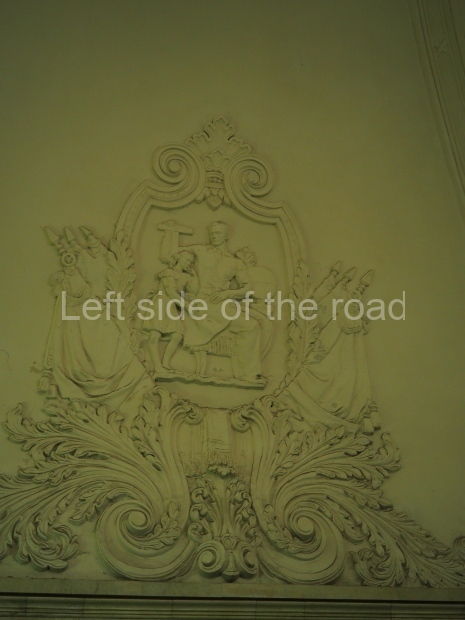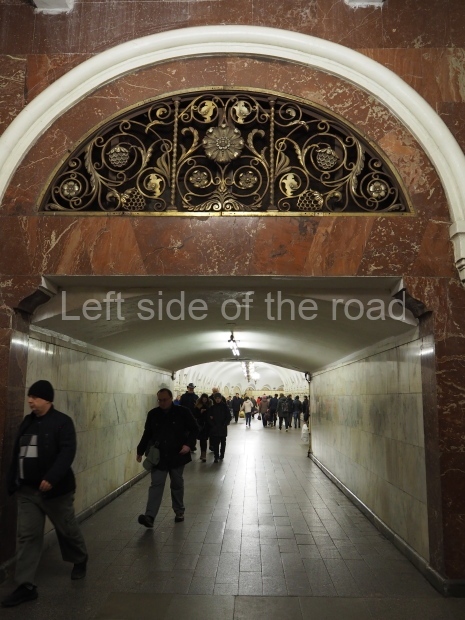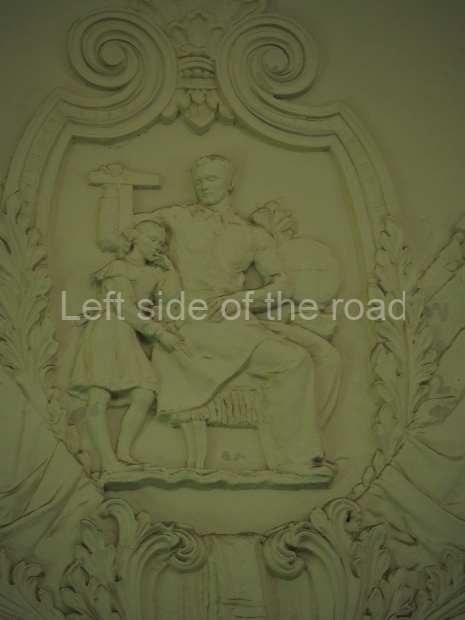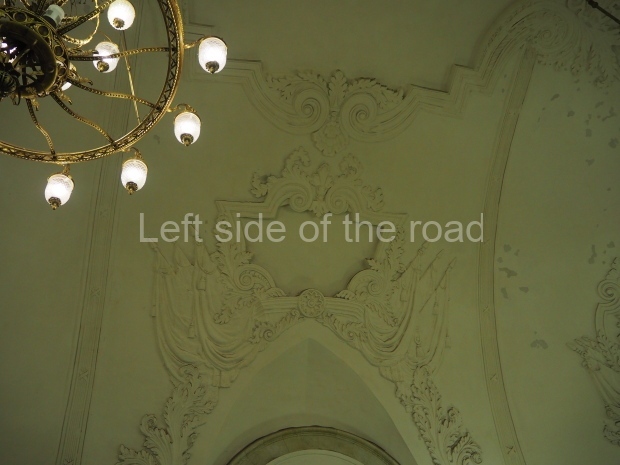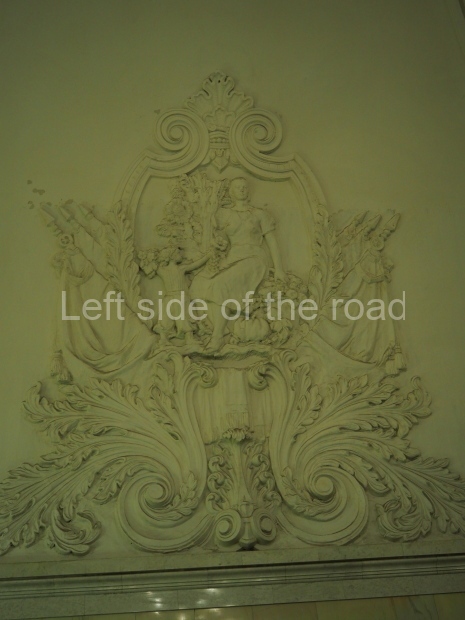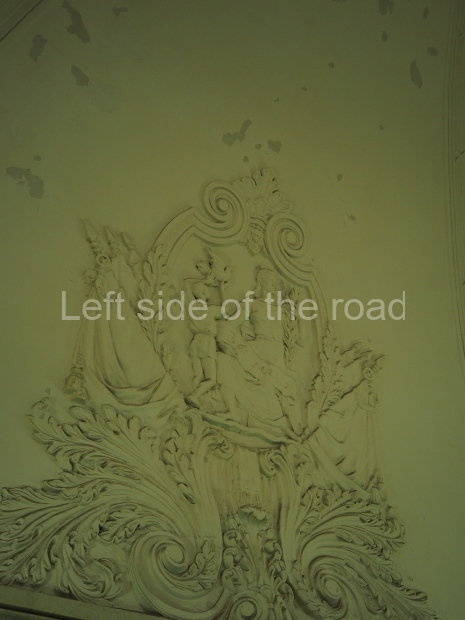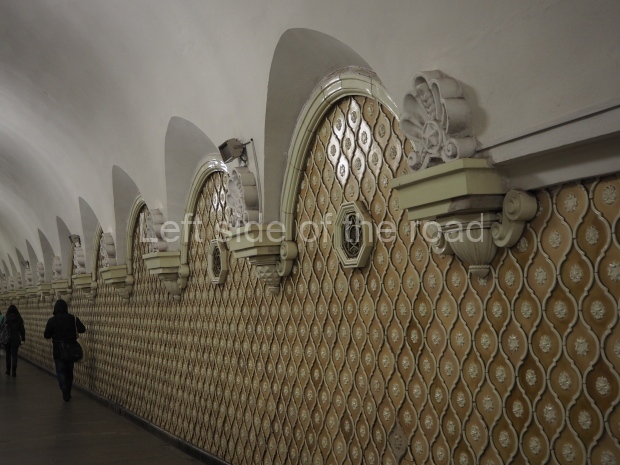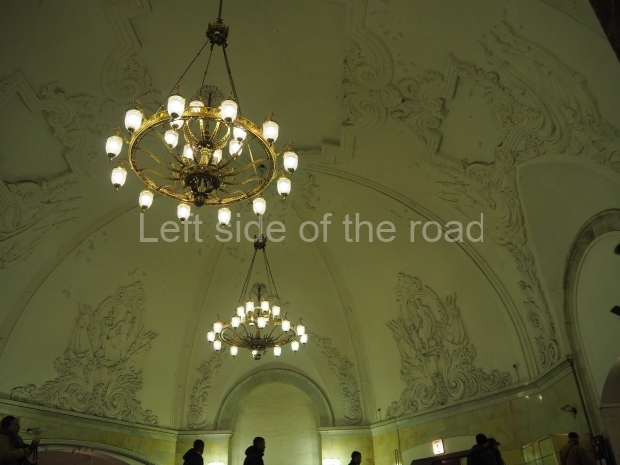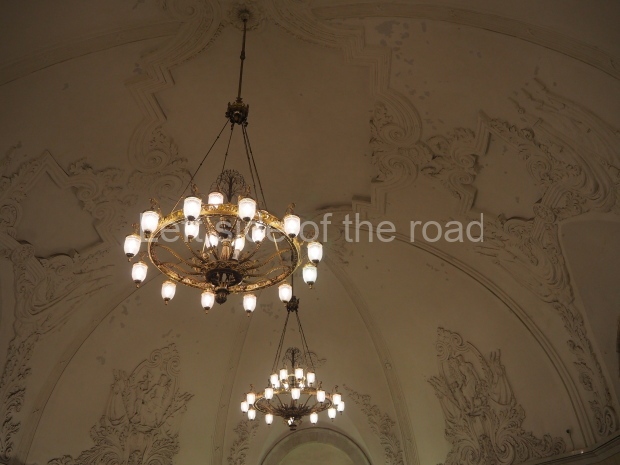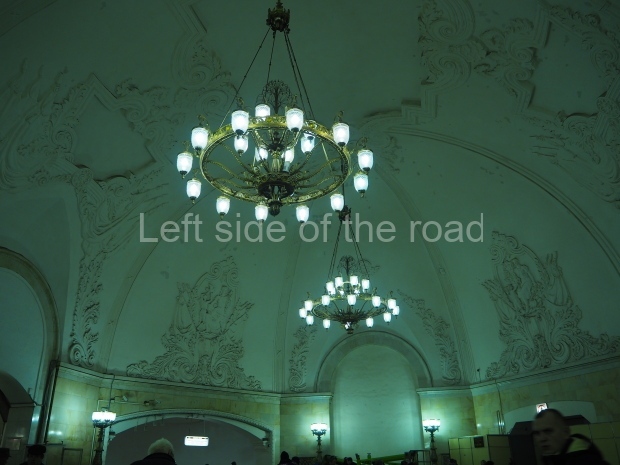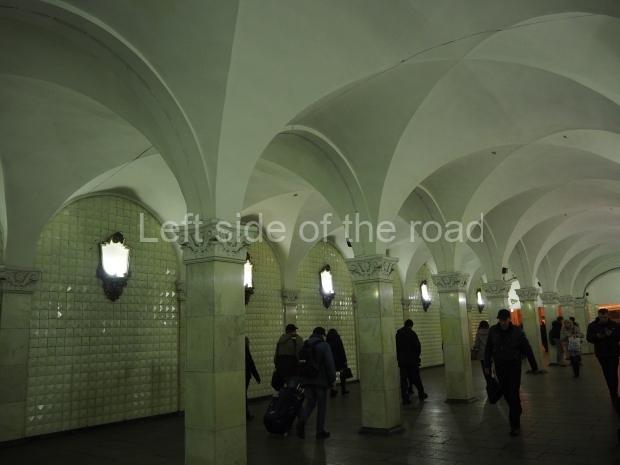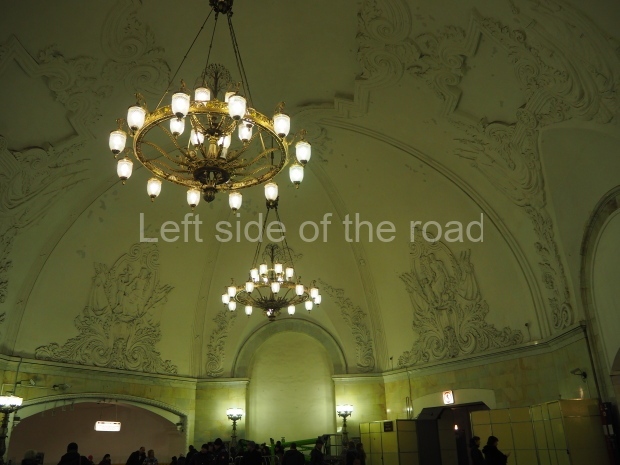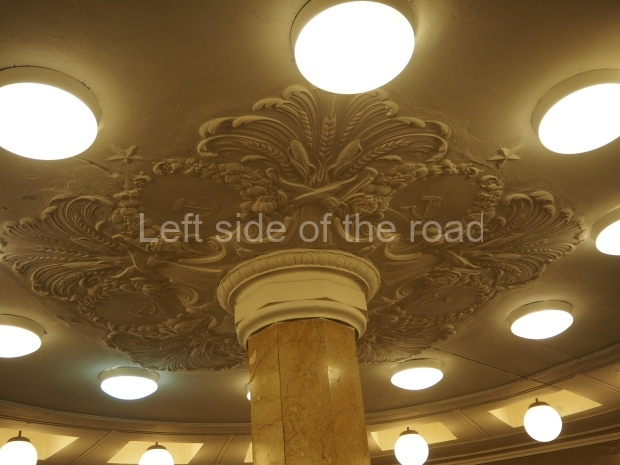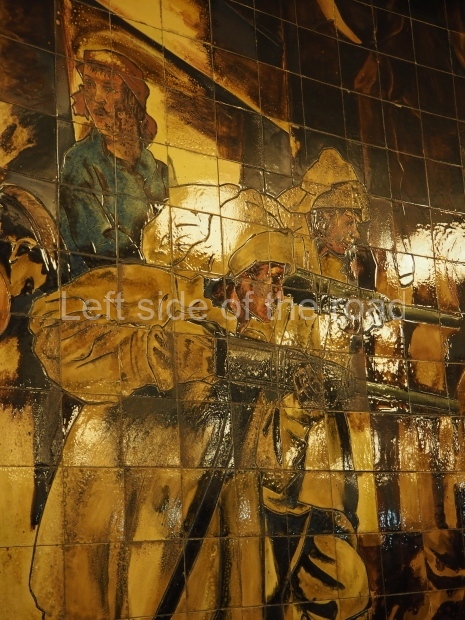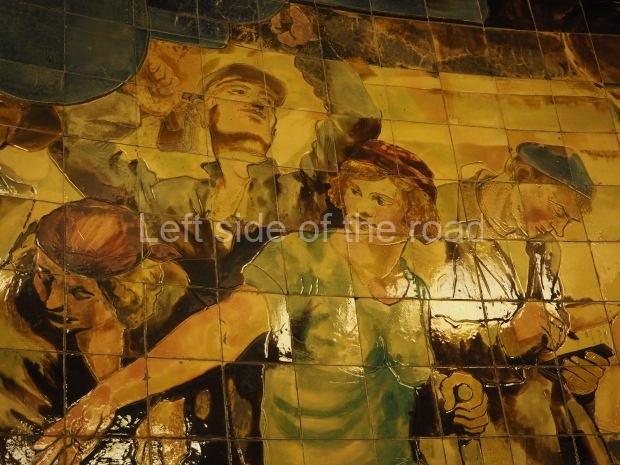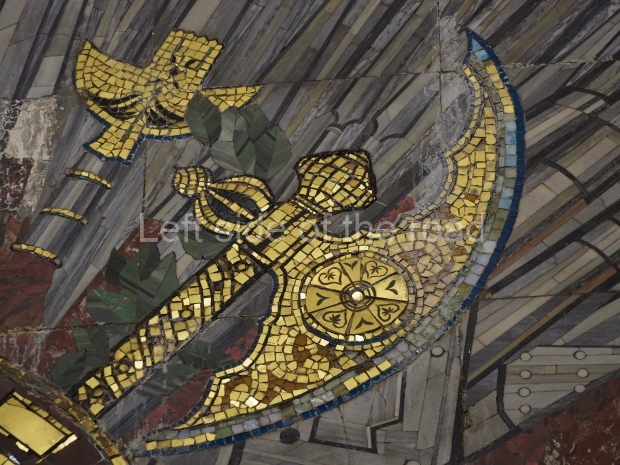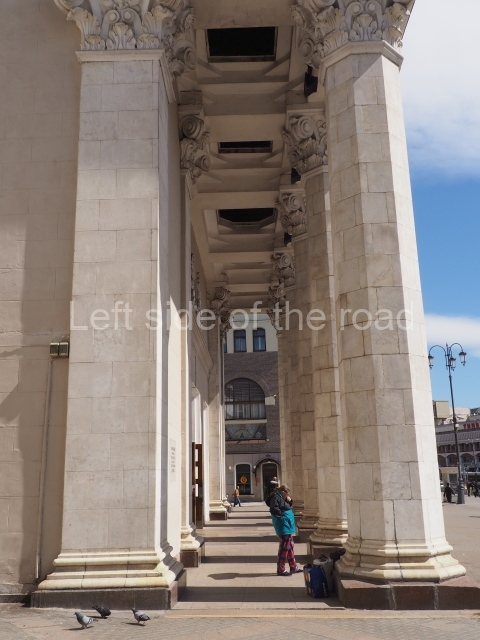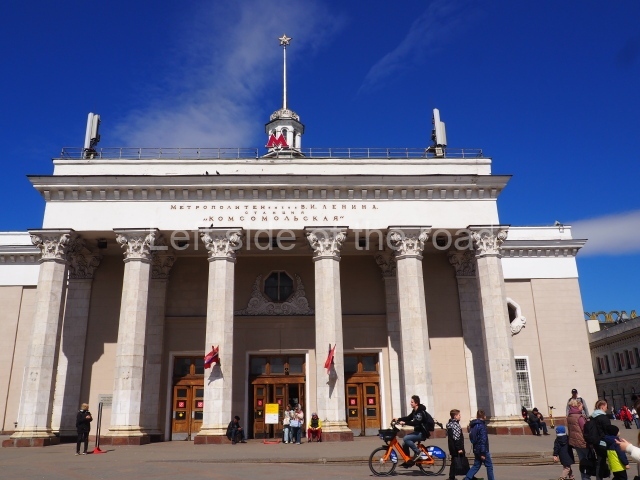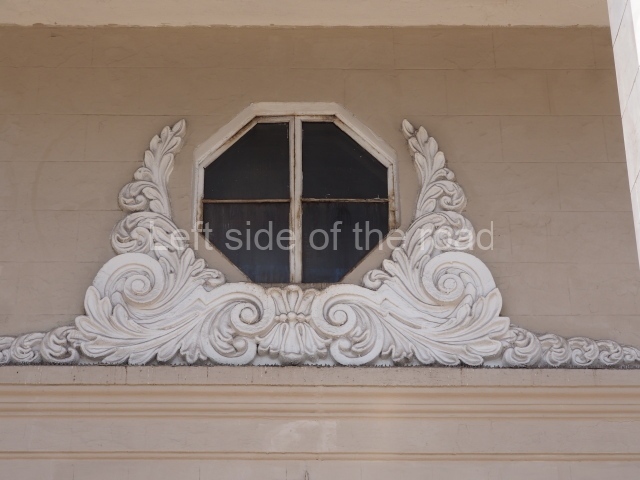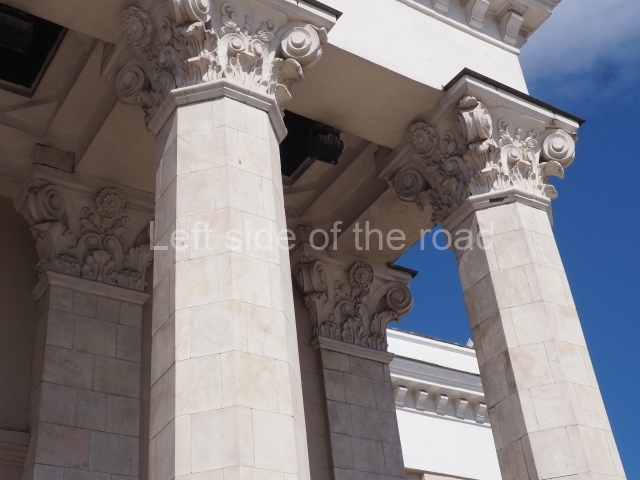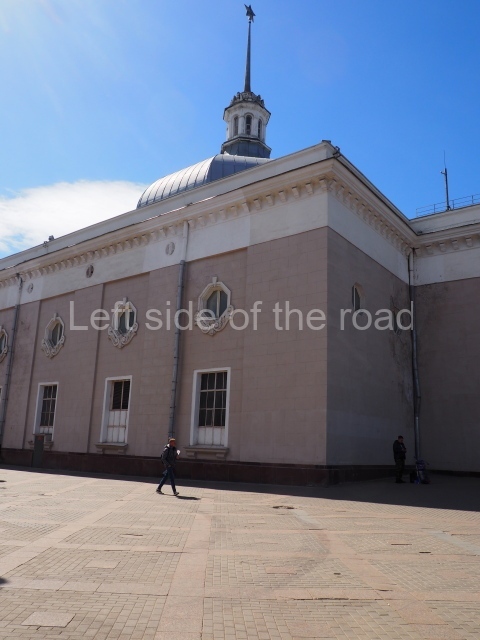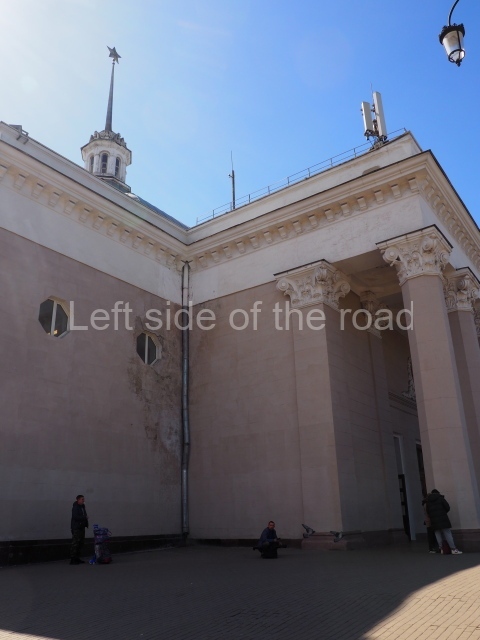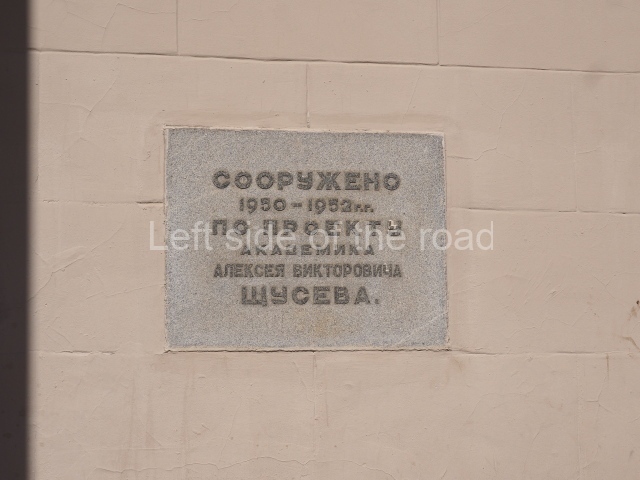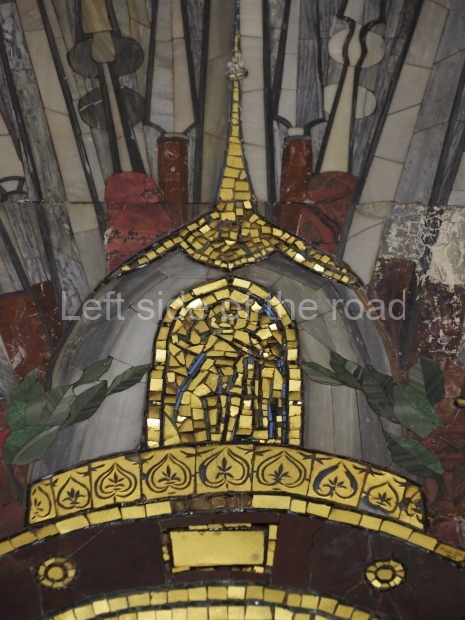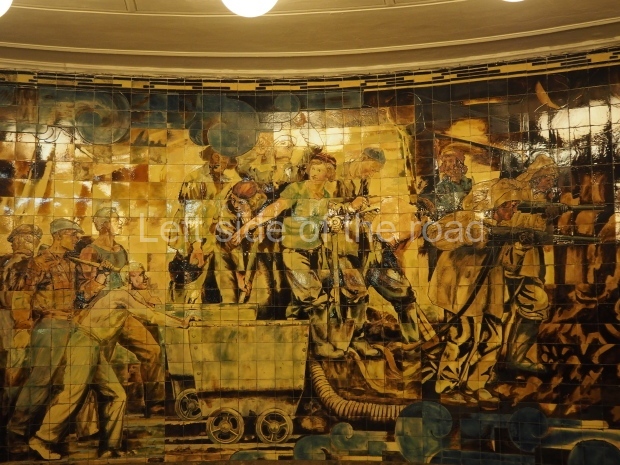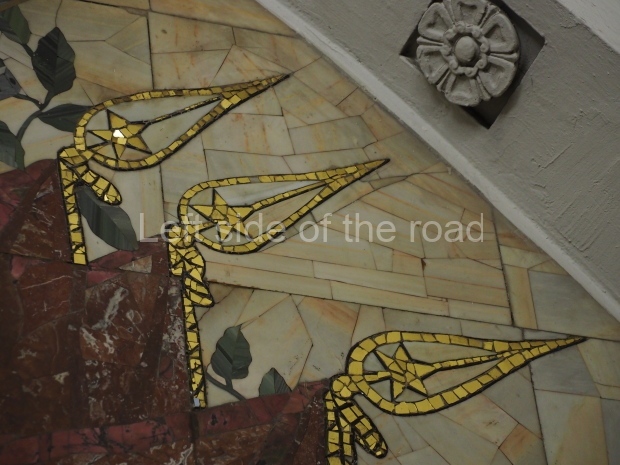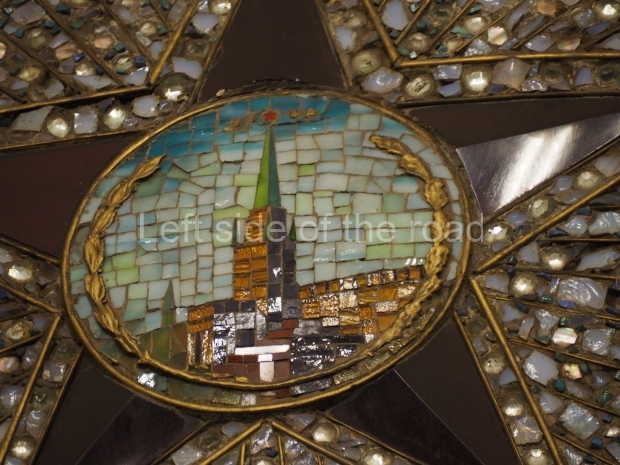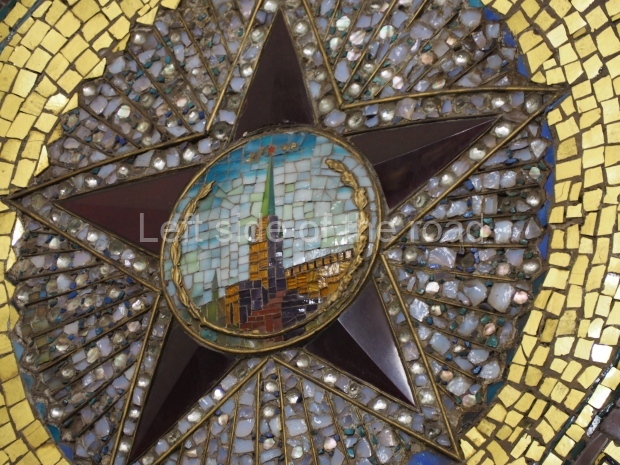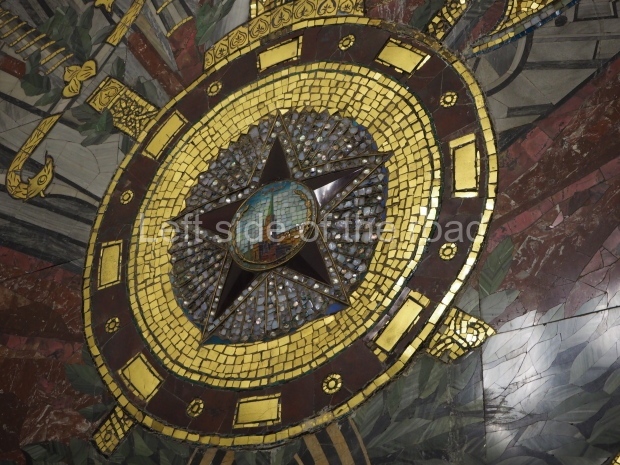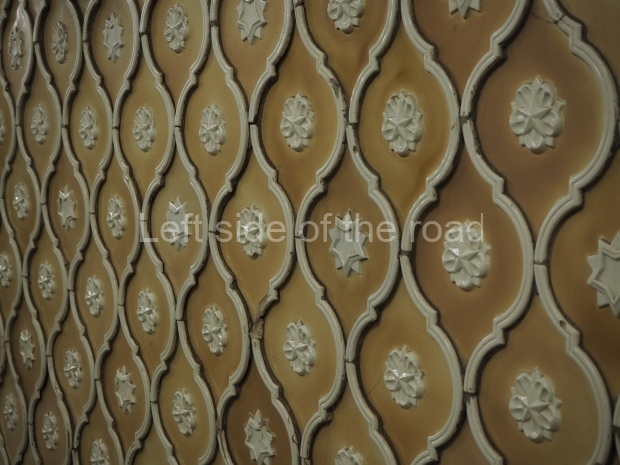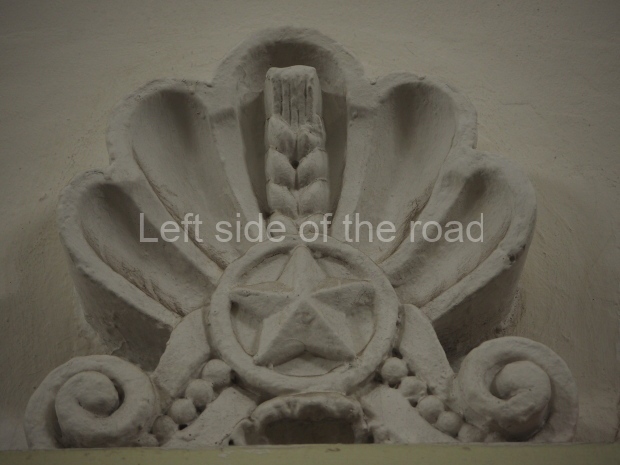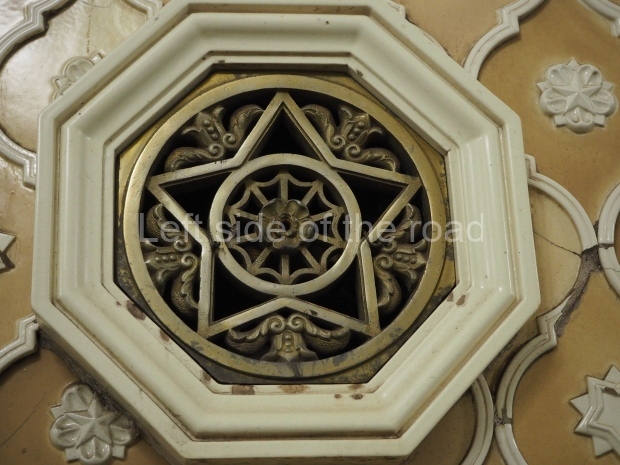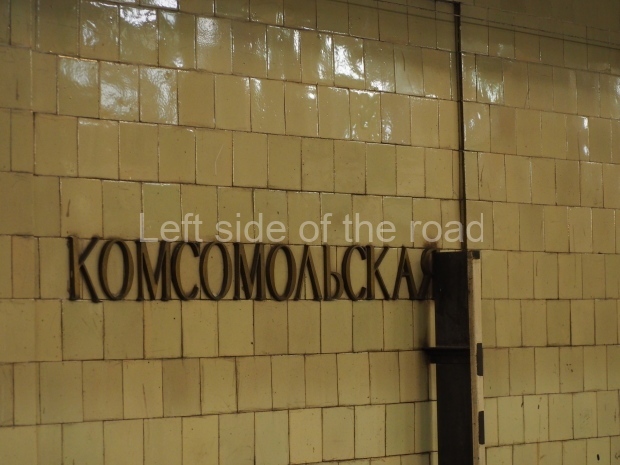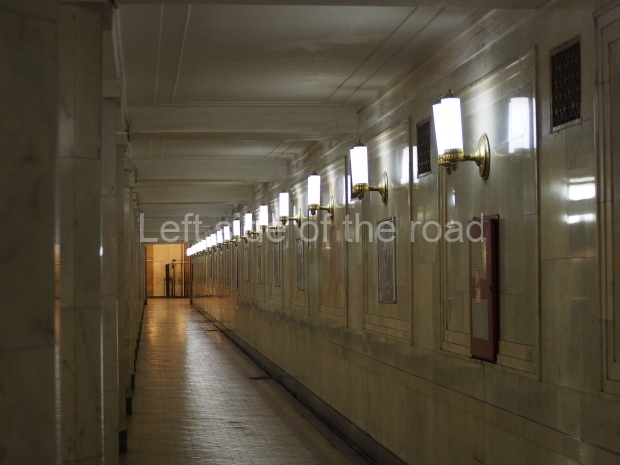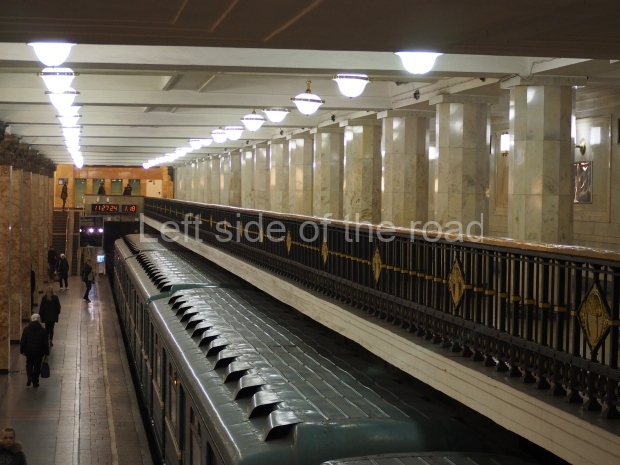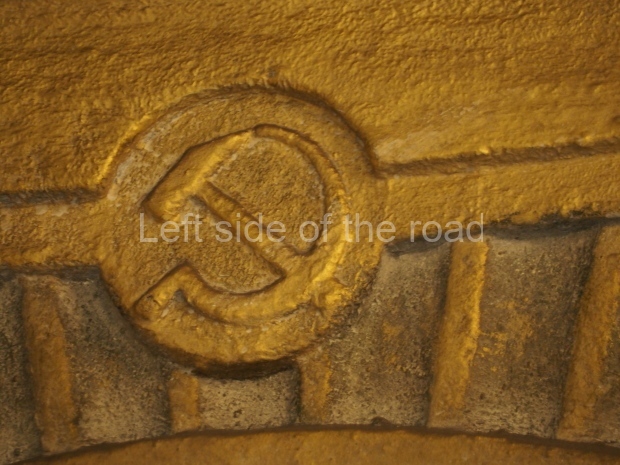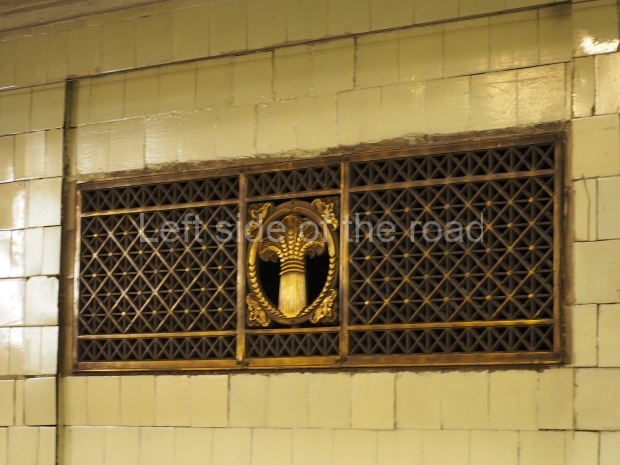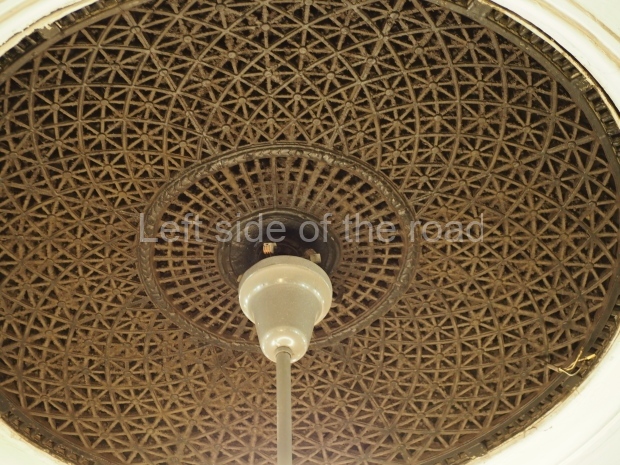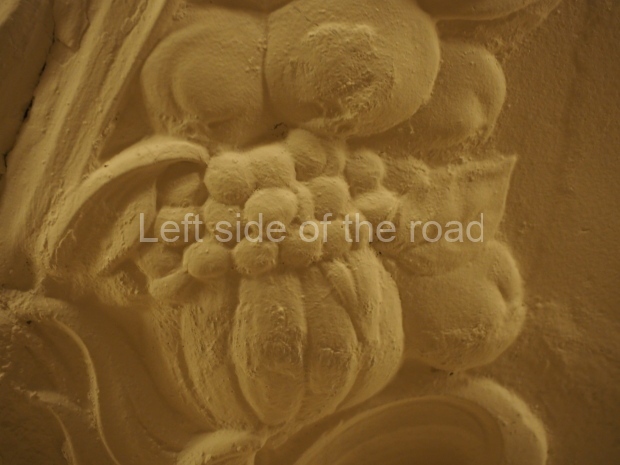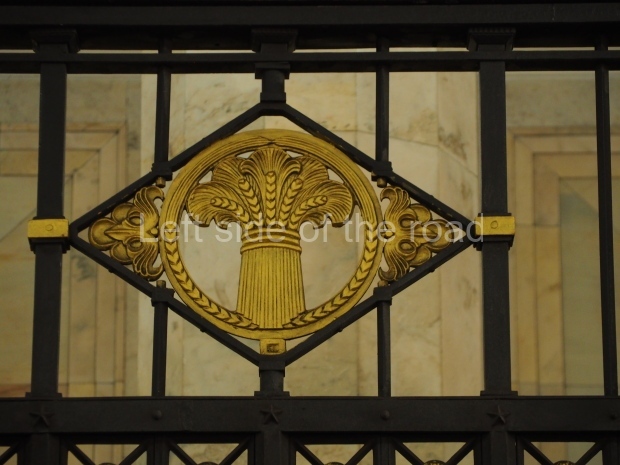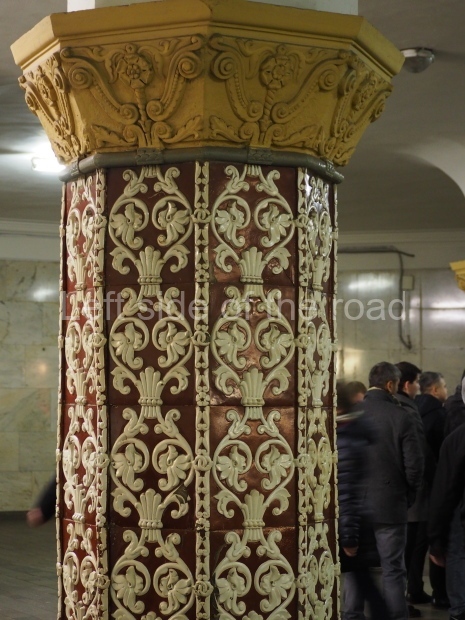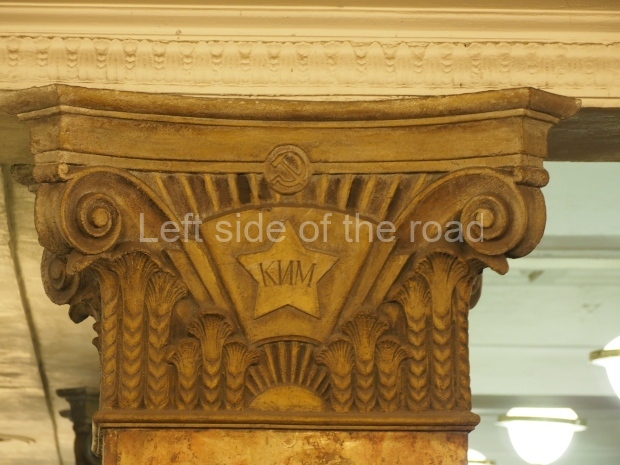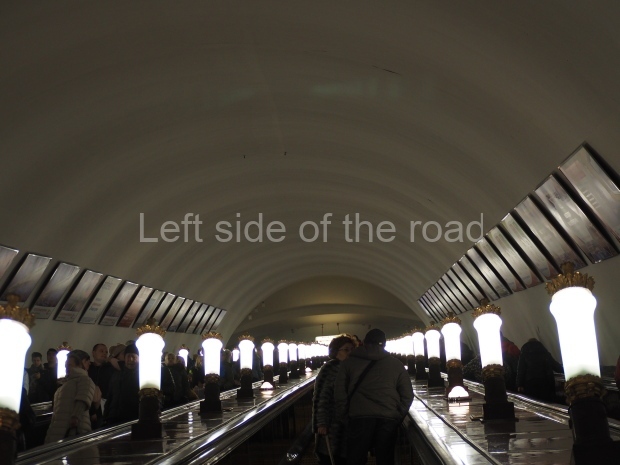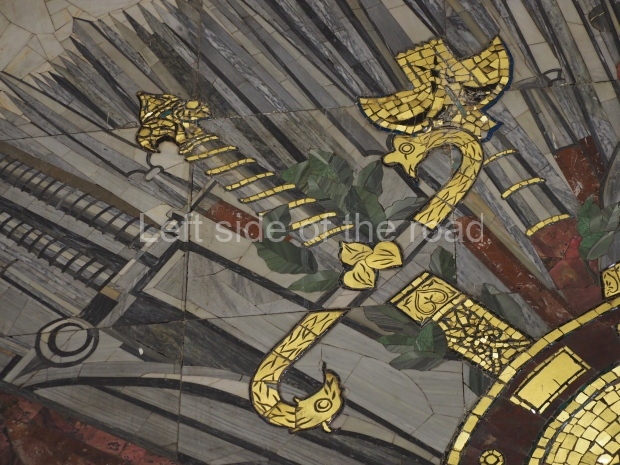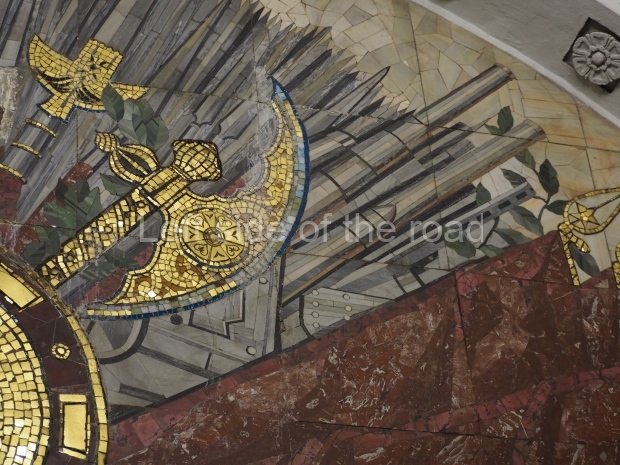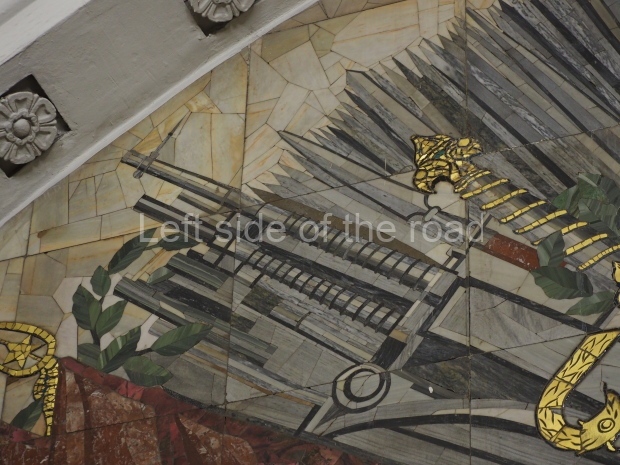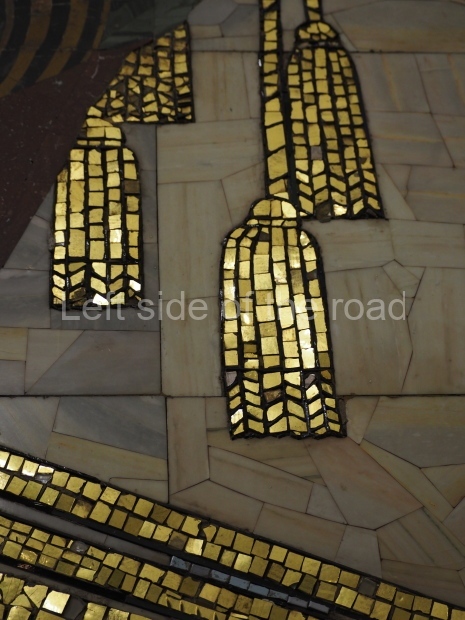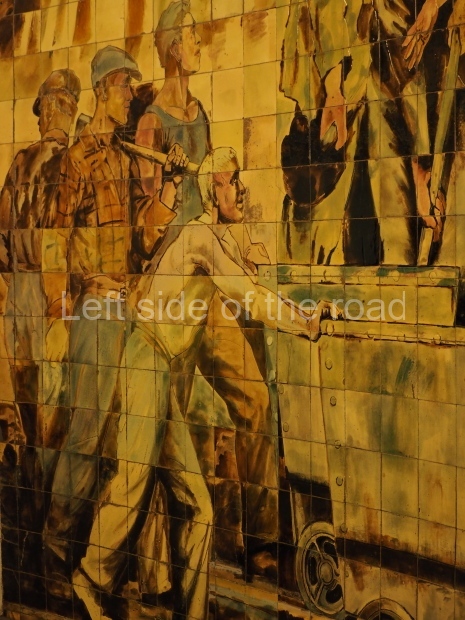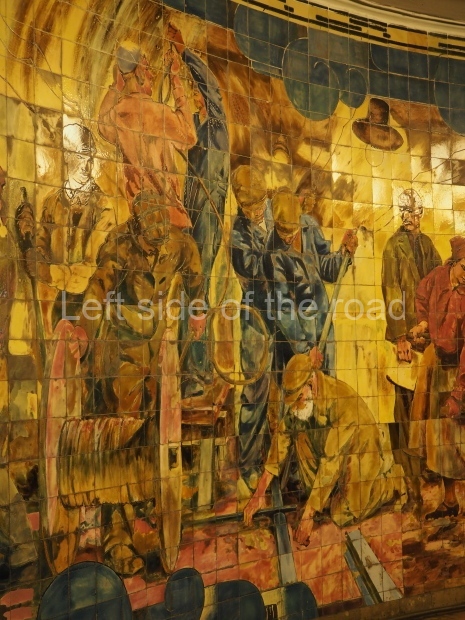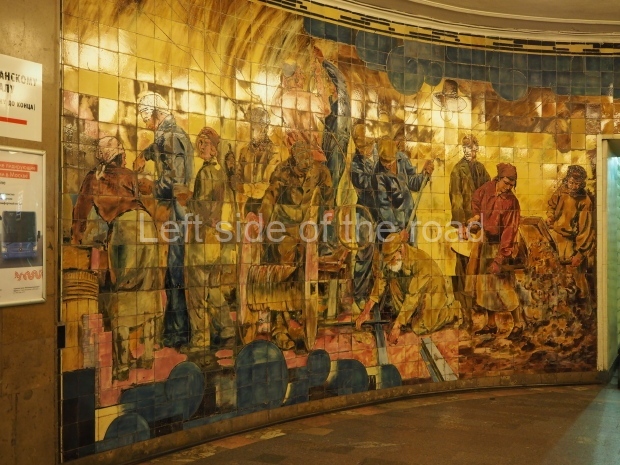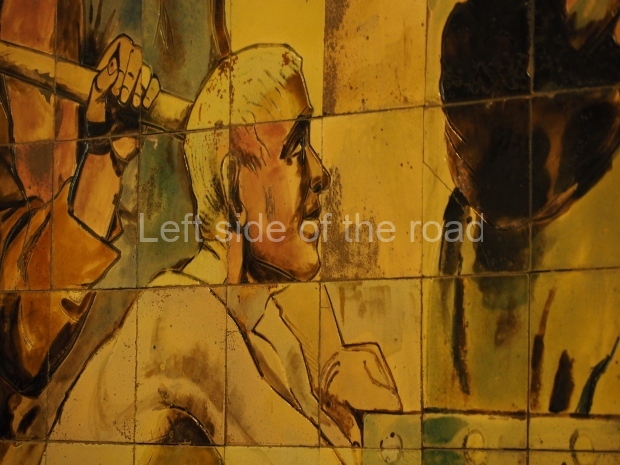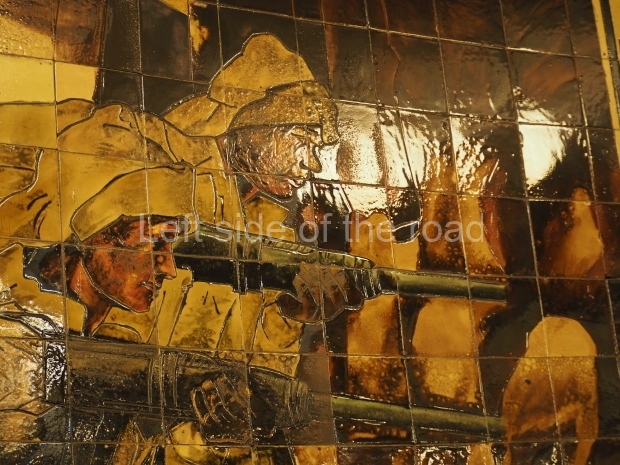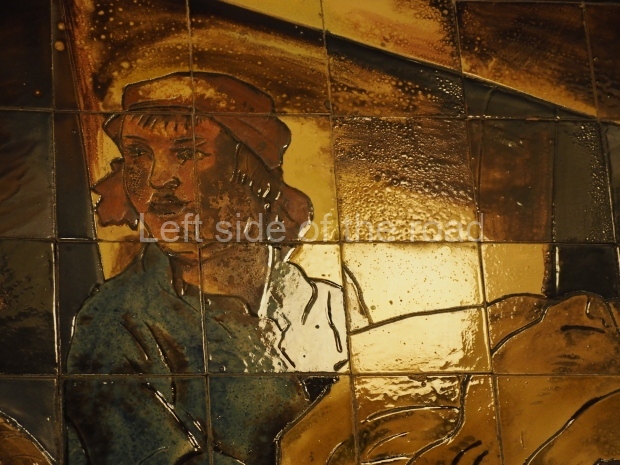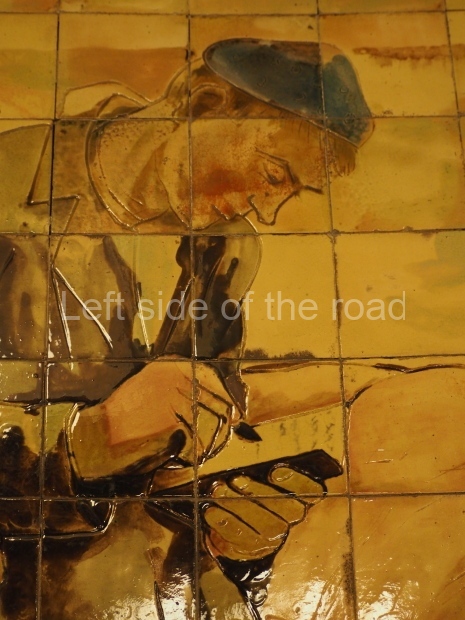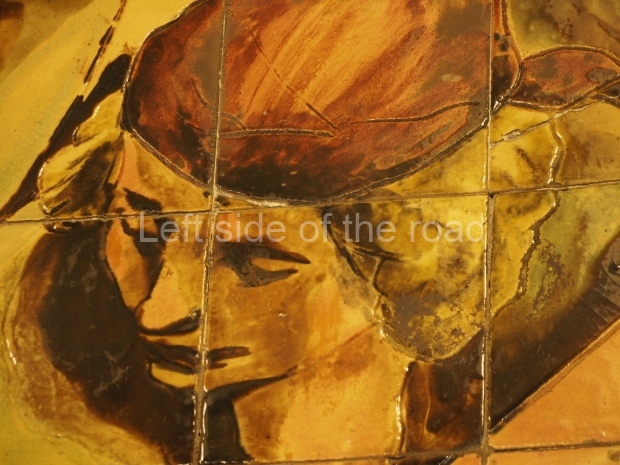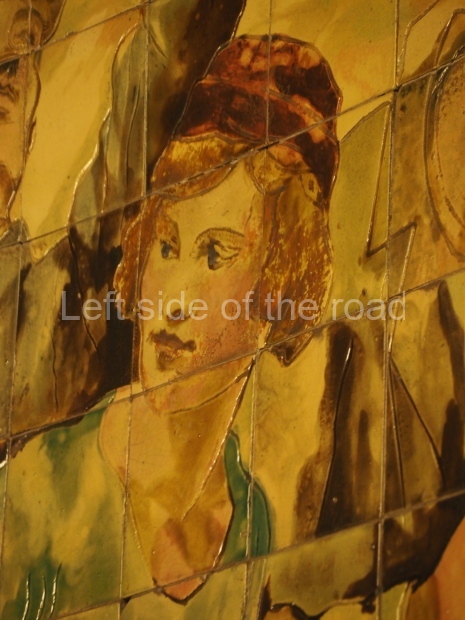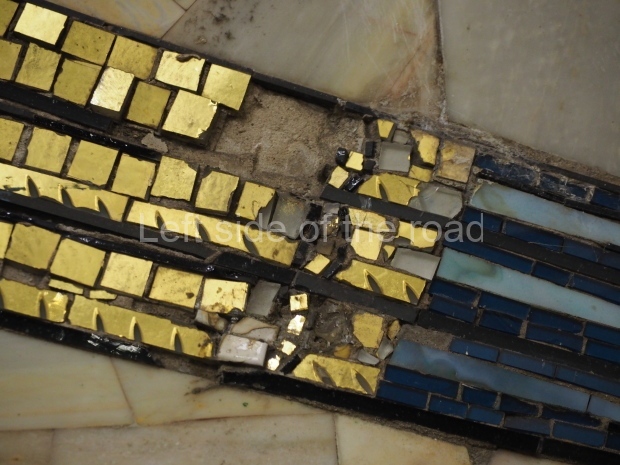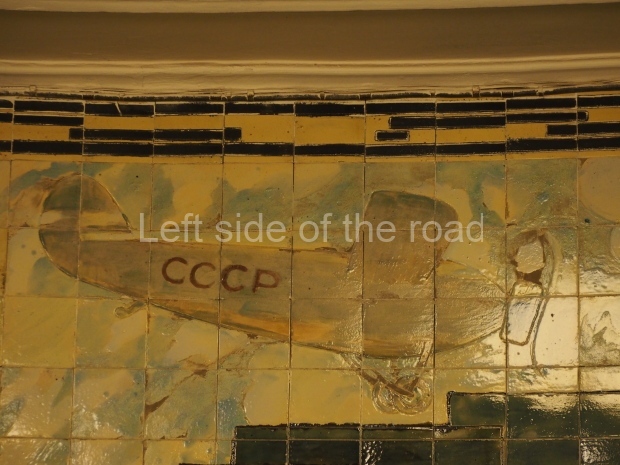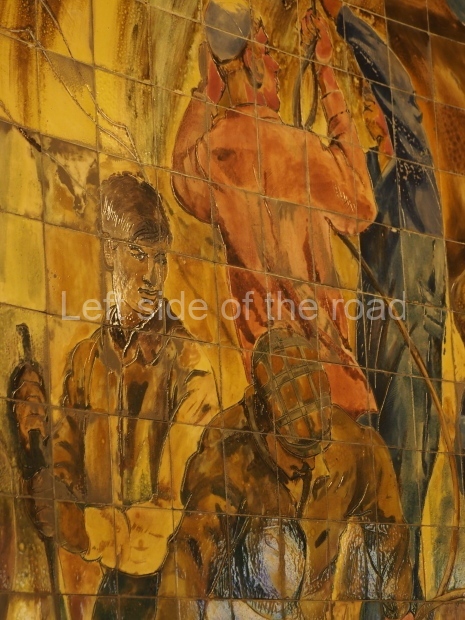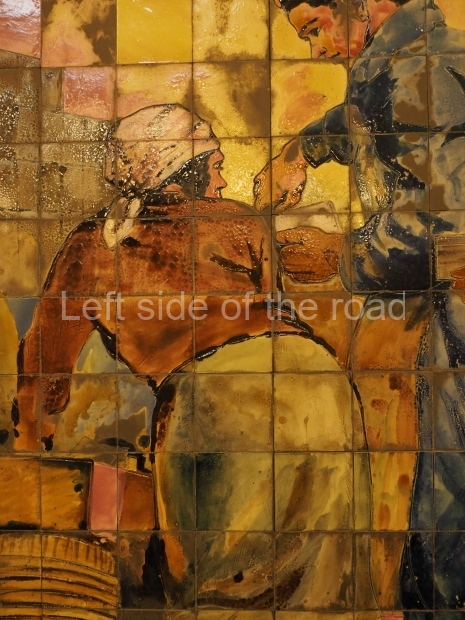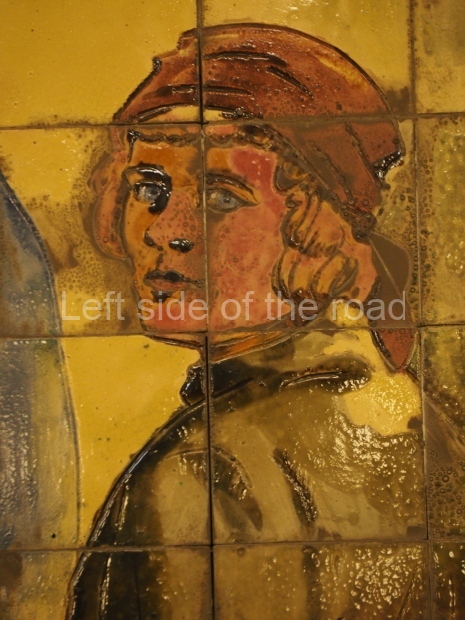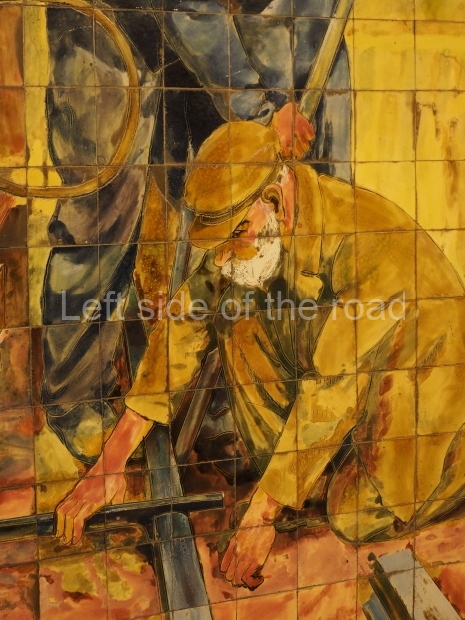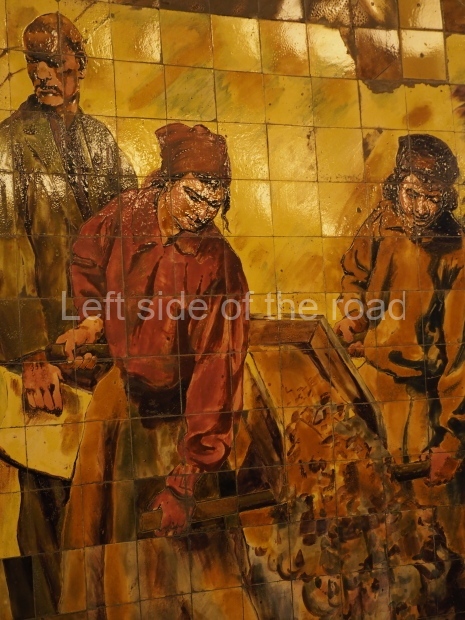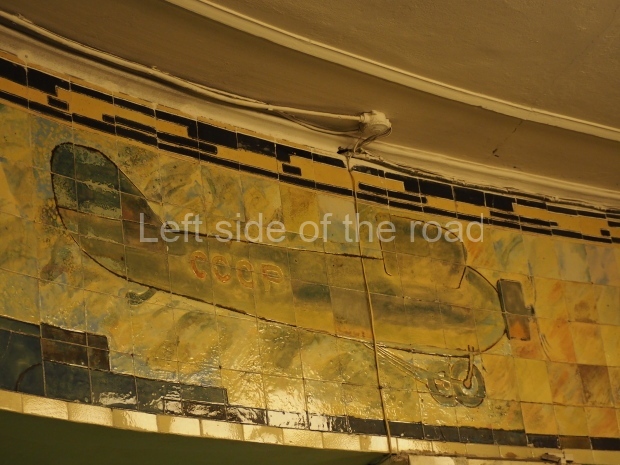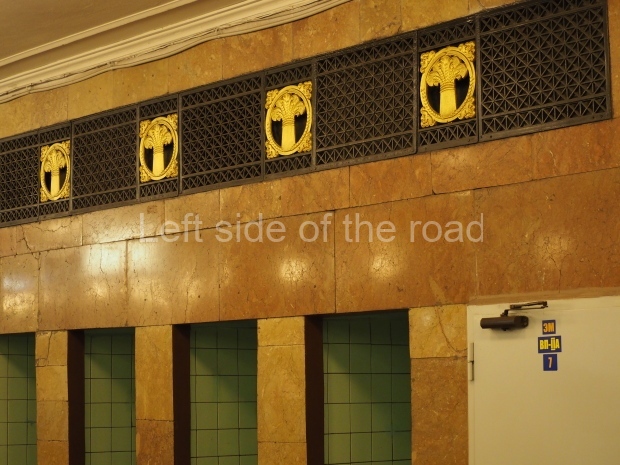Moscow Metro – a Socialist Realist Art Gallery
Moscow Metro – Komsomolskaya – Line 1
Komsomolskaya (Комсомо́льская) is a Moscow Metro station in the Krasnoselsky District, Central Administrative Okrug, Moscow. It is on the Sokolnicheskaya line, between Krasnye Vorota and Krasnoselskaya stations. It is located under Komsomolskaya Square, between the Leningradsky, Yaroslavsky, and Kazansky railway terminals. The station was named for the workers of the Komsomol youth league who helped to construct the first Metro line. It has a transfer at its namesake on the Koltsevaya line.
Komsomolskaya was built using the cut and cover method, with construction beginning on 3 May 1933. Temporary bridges were built over the construction site to avoid disrupting traffic, especially the numerous tram routes in the area. To counteract the high water table, the station was built on 636 piles which were driven into the saturated soil.
Heavy rains in the summer of 1934 threatened the construction site several times, and at one point even the Kazansky terminal was in danger of collapsing. Nevertheless, the concrete structure of the station was completed by August 26 and Komsomolskaya opened on schedule on May 15, 1935.
Due to Komsomolskaya’s location under a major transit hub, the station was built with an unusual upper gallery above the platform to help handle rush crowds. The station has tall pillars faced with pinkish limestone and topped with bronze capitals displaying the emblem of the Komsomol league. The station was designed by Dmitry Chechulin, and a model of it was displayed at the 1937 Paris World’s fair.
The station’s southern entrance vestibule is built into the Kazansky Rail Terminal. The northern vestibule is on the opposite side of the square, between the Leningradsky and Yaroslavsky rail terminals. The latter entrance did not survive in its original form, having been replaced with a massive structure serving both this station and the Koltsevaya line station in 1952. There is a short branch line between Komsomolskaya and Krasnoselskaya stations, that leads to the Severnoe Depot. On 15 October 1934 the first Metro train left this depot for a trial run.
Text from Wikipedia.
Komsomolskaya, radial
Kalanchevskaya – when put into service
Date of opening;
15th May 1935
Construction of the station;
shallow column, three-span
Architect of the underground part;
D. Chechulin
Transition to Komsomolskaya of the Circle Line
Komsomolskaya is the key station of the first phase. Its construction began in May 1933. The station was constructed by open-cut technology midst of an intensive transport junction at complicated hydrogeological conditions. When the construction of the trench began, it was found that there was too much water in local sand. Ground actually flew down from spades and excavator buckets. The task bore a strong resemblance to an attempt to scoop out sea. Then, metal beams were hammered in right up against each other along the perimeter of the future trench, so formed underground paling hardly permeable for water. Then, two deep and long transverse trenches were made near the both ends of the future station. Hence a huge trough was made. The bottom was Jurassic clay, while the walls were metal beams. The quicksand appeared as being entrapped and began to give water back. Some weeks later the construction of the main trench began. Winter made the construction quicker. Water drained from the bottom while froze from above. Builders took out 1200 cubic metres of ground from the trench every day and removed by lorries and cargo trams.
The first train ran from Sokolniki to Komsomolskaya in October 1934, or 18 months after the construction began. The quicksand-control technology is not the only innovation used for the construction of Komsomolskaya. Earlier sleepers in the underground were put on a ballast layer of crushed stones, which holds them. This solution has lots of pluses, but crushed stones accumulate dirt, dust, and garbage, which can be removed only by replacing the whole ballast layer. Dirt in a front palace station? It is absolutely inadmissible. During a week, ordinary builders developed, made agree, and tested the method of putting sleepers into specially made concrete from which they can be removed and replaced. Such concrete was called truck one. Nowadays sleepers at all stations are put into concrete truck while a ballast layer is used in tunnels.
Komsomolskaya was designed based on the calculation of maximum traffic. Its main characteristic features are side galleries above the platforms at a height of more than 4 m. They connect entrance halls at the ends of the station while a bridge connects them at the centre from where staircases run to the lower level of the platform. The architect succeeded building two-storeyed construction convenient for passengers and keep the vast unencumbered interior. Such project has been unique for the Moscow metro for near 70 years.
Despite the size, Komsomolskaya is simple, light, and elegant as all other stations of the first phase. Square columns, decorative columns of the galleries, and walls of the entrance halls are faced with Crimean marble from the Chergun deposit. It is peculiar stone with all shades of yellow and light brown. Here is amber, honey, baked milk, and fumed wood. Its structure is stratifies, or rolling, or fluid, breccia-like. The caps of support columns are decorated with relief bronze-coloured crowns with five-pointed stars with Russian letters ‘KMM’ inside. It is the emblem of the Communist International of Youth whose part was Russian Communist Union of Youth (briefly Komsomol in Russian). In the gratitude for exhausting labour of many thousands of members of Komsonol who built the underground in 1933, Kalanchevskaya Ploshchad was renamed into Komsomolskaya Ploshchad. The station also was renamed into Komsomolskaya, and the emblems of Komsomol adorned the caps of the columns.
A staircase from the lower level of the southern end of the station runs to the southern entrance hall located at the level of galleries. The similar entrance hall is at the opposite, northern end of the station. From there the passageway divided with facet columns leads to four short escalators, which connect the station with the northern ground pavilion.
The side concave wall of the northern entrance hall, on the right and left sides of the passageway, is decorated with a coloured majolica panel ‘Construction of mine of the underground’ (E. Lansere). It shows sketches of the metro building in a chronological order. On the right side, tunnellers crush stones with air hammer and remove it with cars from the pit. On the left side, other people lay tracks and electrical cables, paint and face the station. The colour of the panel ranges from dark brown, nearly black, on the right side through ochre, blue, and yellow to pink on the left side. The faces of all the persons are different. This indicates that they are portraits of first metro builders. It is an interesting fact that most persons are pictured in profile, and some those en face are with eyes dropped. They either write something in notebooks or look at ground. Only two open bright looks are there. A girl on the right side of the panel looks at onlooker and invites them with her hand – ‘Come here to the pit. Let’s build metro together’. The blue eyes of her girl friend on the left side of the panel are not less inviting but with reproach – ‘Look at me. We already built this station, I’m alone here, but you haven’t come’.
Text from Moscow Metro 1935-2005, p58/9
Location:
GPS:
55.7753°N
37.6562°E
Depth:
8 metres (26 ft)
Opened:
15 May 1935








